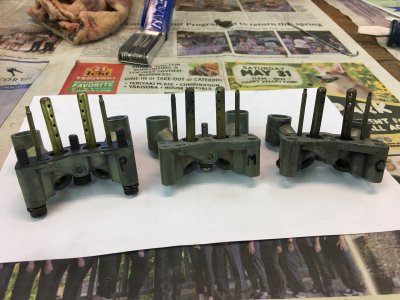I can certainly try this the next time I take it for a spin. It's easier to reach the distributor bolt from under the van than from the engine box, so I'll try to make a wrench.but if it were me, I'd advance the timing by loosening the distributor hold down and gently tapping the distributor with the 1/2" open end wrench to move the vacuum can 1/4" in the advance direction. Lock down and try it. Keep doing this till pinging is heard, then go back 1/4" and you then know timing is perfect for those highway conditions.
When driving the van, I'm only applying light throttle right in the meat of the torque curve- It scoots along very well. If it wasn't burning more gas than a Buick station wagon towing a boat, I'd think it was running perfectly!


